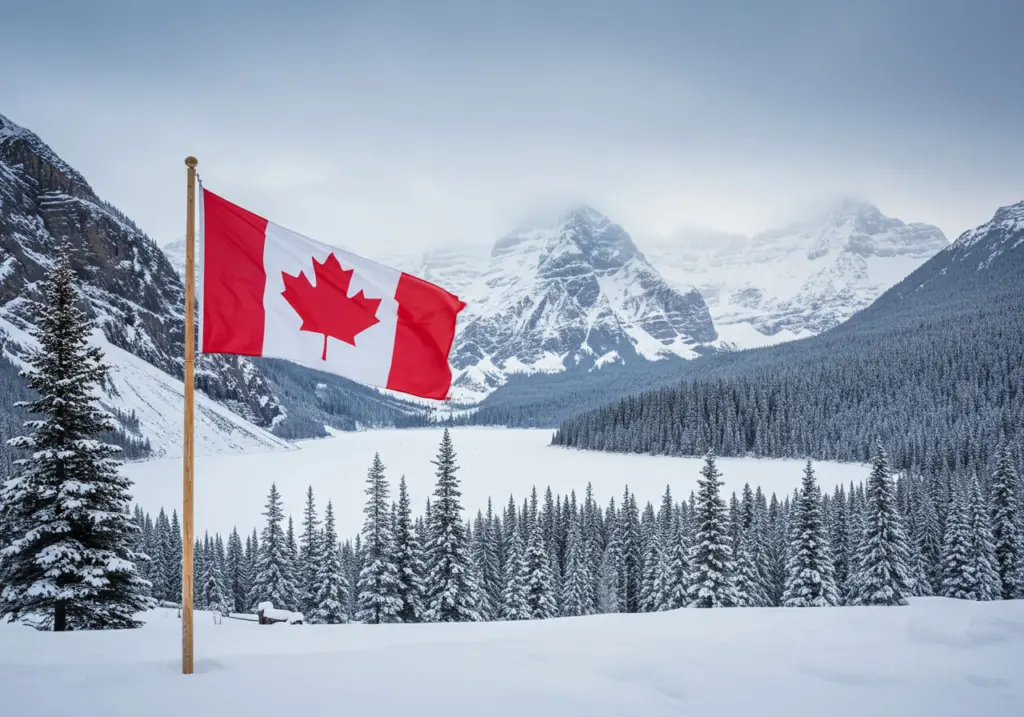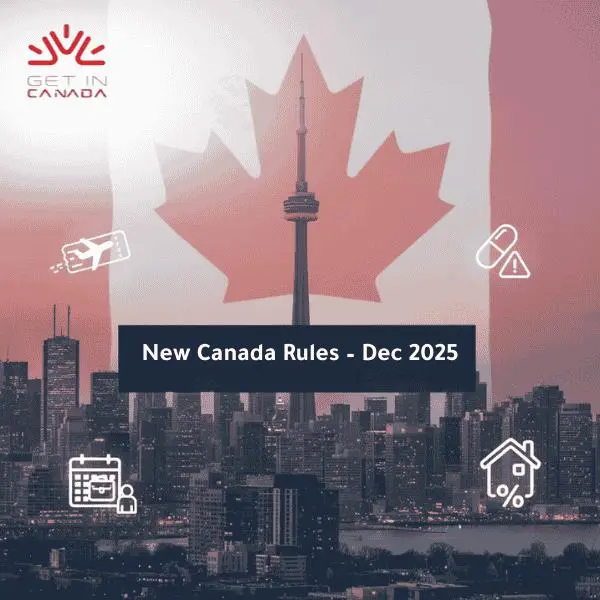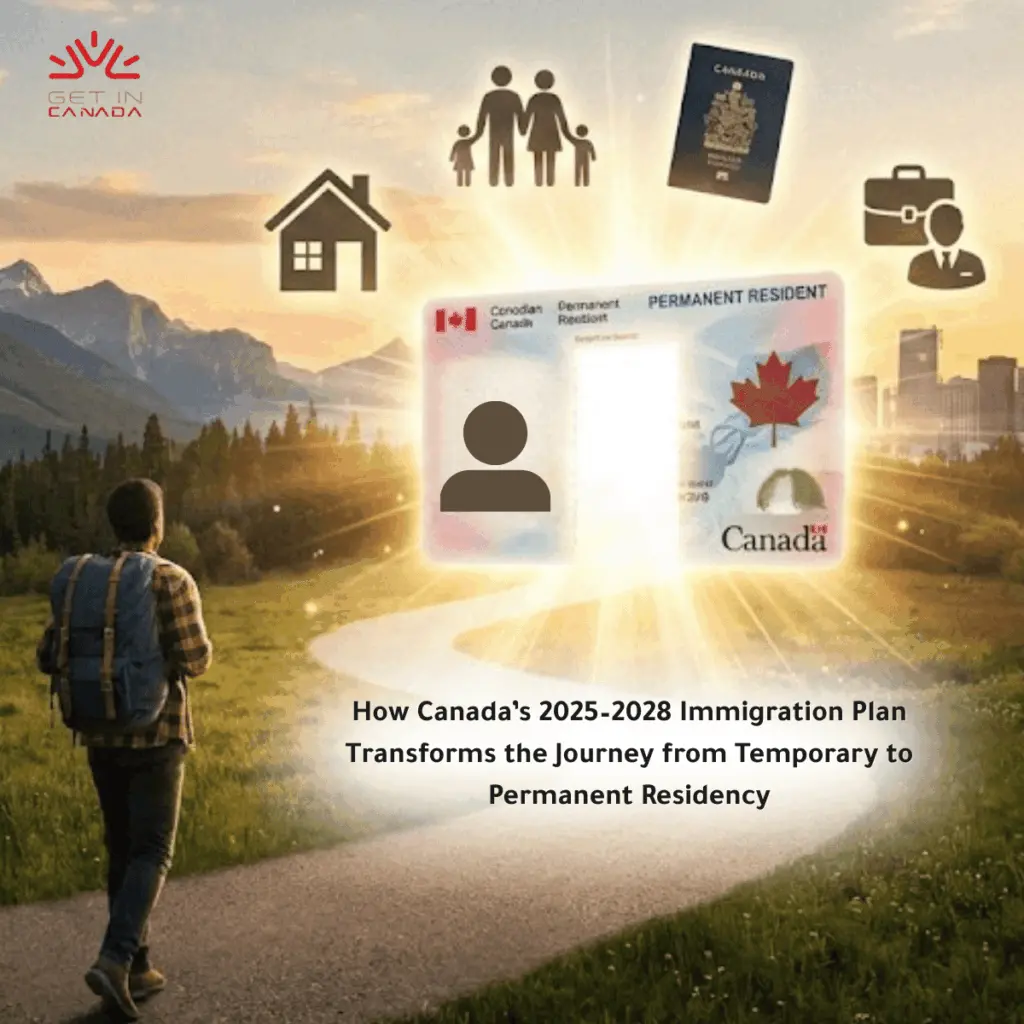Best Places to Visit in Winter in Canada 2025
Canada in winter offers an unmatched travel experience. From snowy mountain towns and ice-covered waterfalls to cultural festivals and remote northern adventures, winter travel in Canada opens the door to a world of wonder. Whether you’re a first-time visitor or a seasoned traveler, this guide introduces the top destinations to explore and practical tips to help you travel safely and comfortably during the Canadian winter season.

1. Banff & Lake Louise, Alberta
Banff and Lake Louise are some of the most iconic winter destinations in Canada. Located in Alberta’s Banff National Park, these areas offer postcard-perfect views of snow-covered mountains, frozen lakes, and evergreen forests dusted in white. During winter, the region becomes a hub for snow sports and cozy alpine experiences.
Visitors can ski or snowboard at three major resorts—Sunshine Village, Mount Norquay, and Lake Louise Ski Resort—each offering varied terrain and breathtaking scenery. For those who prefer low-key activities, snowshoeing and tubing are family-friendly options, and soaking in the Banff Upper Hot Springs while surrounded by snow is a must.
In January, the SnowDays Festival transforms the town into a celebration of winter art and culture, with ice carving competitions and illuminated snow sculptures. Don’t forget to take a scenic walk on the frozen shores of Lake Louise or Two Jack Lake.
➡️ Related: Explore Banff National Park
Find out if you are eligible to get in Canada →
2. Jasper, Alberta
Jasper, also located in the Canadian Rockies, is a quieter and more rugged alternative to Banff. It’s known for its vast wilderness, fewer crowds, and dramatic winter landscapes. The small town of Jasper becomes a base for exploring Jasper National Park, one of the largest and most pristine parks in the country.
In winter, you can hike through frozen canyons like Maligne Canyon, where you’ll see stunning ice formations and brave climbers scaling frozen waterfalls. Stargazing here is phenomenal—Jasper is designated as a Dark Sky Preserve, making it ideal for night-sky photography and astronomy enthusiasts.
For the adventurous, try fat biking through snowy trails or sign up for guided ice climbing and wildlife viewing tours. Jasper is a great choice if you’re looking for a peaceful and immersive winter nature experience.
➡️ Related: Discover Hidden Gems in Canada 2025
3. Whistler, British Columbia
No guide to winter travel in Canada is complete without Whistler. Just two hours from Vancouver, Whistler is home to Whistler Blackcomb, the largest ski resort in North America. With over 200 runs, it’s a dream destination for skiers and snowboarders of all skill levels.
But Whistler offers more than just skiing. Visitors can explore snow-covered trails, enjoy snowmobile tours, or try tubing and ziplining over frozen landscapes. After a day outdoors, unwind in one of the luxurious spas or dine at award-winning restaurants in Whistler Village.
Whistler is also known for its vibrant après-ski scene, winter nightlife, and seasonal events like the Fire & Ice Show. It’s a lively and upscale winter destination perfect for couples, groups, or families.
➡️ Related: Best Cities to Visit in Canada 2025
4. Quebec City, Quebec
If you’re looking for old-world charm with a snowy twist, Quebec City delivers. This UNESCO World Heritage site is one of the most romantic and picturesque cities in North America, especially in winter. The cobblestone streets, historic architecture, and French-Canadian culture make it feel like a European getaway.
The highlight of the season is the Carnaval de Québec, held every February. It’s the largest winter carnival in the world, featuring parades, snow sculptures, ice canoe races, music, and even an ice palace. You can also stay at the Hôtel de Glace—an entire hotel built of ice and snow, complete with themed suites and an ice bar.
Try classic winter activities like tobogganing down Terrasse Dufferin, skating in Place d’Youville, or simply walking through the beautifully decorated Old Town under falling snow.
➡️ Related: Canada Considered the Safest Country for Tourists
5. Niagara Falls, Ontario
Though known for summer tourism, Niagara Falls is just as captivating in winter. The waterfalls partially freeze, creating stunning ice formations and mist-covered trees, offering a whole new perspective.
One of the season’s biggest attractions is the Winter Festival of Lights, which runs from mid-November to early January. It features millions of lights, 3D displays, and light shows that bring warmth and wonder to chilly evenings.
While crowds are smaller than in summer, many attractions remain open—like Journey Behind the Falls, the Butterfly Conservatory, and local wineries. Winter travel here is peaceful, budget-friendly, and uniquely beautiful.
➡️ Related: Adapting for Canada’s Diverse Weather Conditions
Find out if you are eligible to get in Canada →
6. Churchill, Manitoba
If you’re seeking a once-in-a-lifetime adventure, Churchill in northern Manitoba should top your list. Known as the “Polar Bear Capital of the World,” it offers unmatched wildlife experiences. While polar bear viewing is best in October–November, the Aurora Borealis (Northern Lights) steals the show from January to March.
Churchill is remote—only accessible by train or plane—but that’s part of the magic. You can go on a tundra buggy tour, visit the Eskimo Museum, and enjoy dog sledding, snowshoeing, and winter hikes across the vast, frozen tundra.
This destination is ideal for seasoned travelers seeking a unique Arctic experience and photographers chasing natural wonders like the aurora.
➡️ Related: Exploring the Natural Wonders of Canada
7. Ottawa–Gatineau, Ontario/Quebec
Canada’s capital region is one of the best places for family-friendly winter travel in Canada. Ottawa’s Rideau Canal Skateway becomes the world’s largest naturally frozen skating rink, stretching nearly 8 km through the heart of the city.
The annual Winterlude Festival, held in February, features giant snow and ice sculptures, live music, Indigenous performances, and interactive outdoor fun for all ages. Visitors can also explore museums, Parliament Hill, and local markets like ByWard.
Just across the river, Gatineau Park offers snowshoeing, cross-country skiing, and scenic winter hiking—all within easy reach of downtown. It’s a perfect blend of culture and nature.
➡️ Related: Best National Parks to Visit in Canada 2025
Travel Tips to have the Best Winter in Canada
To fully enjoy your Canadian winter adventure, here are essential travel tips:
- Dress in layers: Start with thermal base layers, add insulating fleece or wool, and top with a waterproof shell. Don’t forget a warm hat, scarf, gloves, and winter boots.
- Monitor weather: Conditions can change quickly. Use apps like The Weather Network and Environment Canada to stay updated.
- Drive carefully: Winter tires are mandatory in some provinces. Carry a roadside emergency kit and drive slowly on snowy or icy roads.
- Book early: Winter festivals and ski resorts get busy. Plan ahead to secure accommodations and tours.
- Stay safe in nature: If you plan outdoor activities, travel with others, carry navigation tools, and inform someone of your route.
➡️ Related: Adapting for Canada’s Diverse Weather Conditions
Book Your Consultation Session →
Final Thoughts about Winter in Canada
From the icy plains of Churchill to the sparkling streets of Quebec City, winter travel in Canada promises beauty, adventure, and cultural immersion. Embrace the cold, dress warmly, and prepare to fall in love with a country that truly shines in winter.











